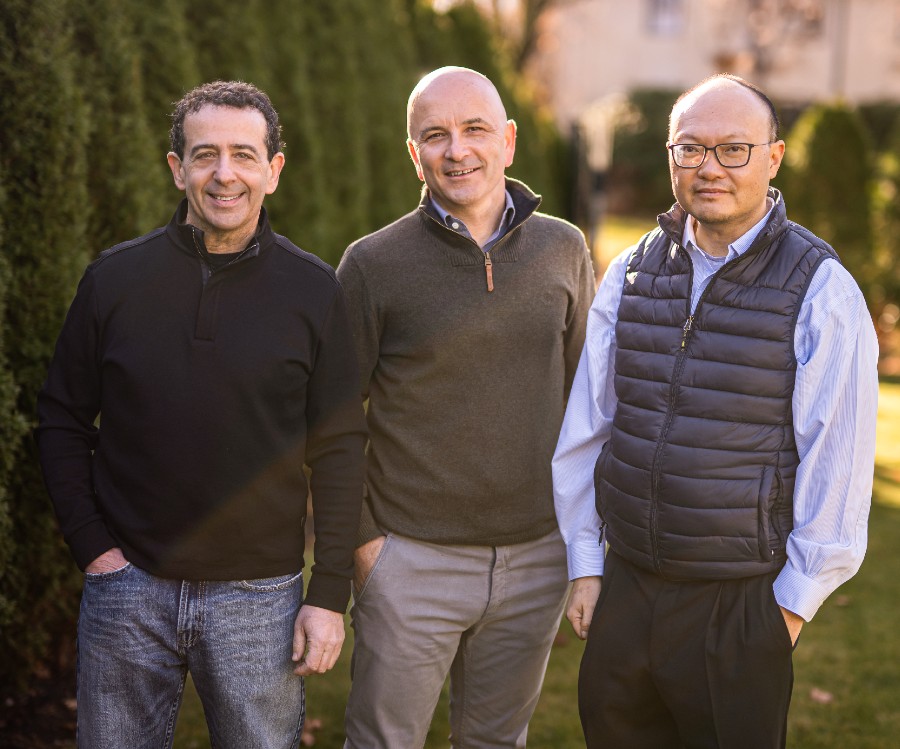When Milenko Cicmil, PhD, first heard about the technology underlying Tasca Therapeutics, a newly-minted small molecular inhibitor company, he was intrigued. The privately-held company, which launched this week with a $52 million Series A financing, plans to develop oncology drugs that target specific lipid-binding pockets on proteins.
Tasca, named after the Italian word for “pocket,” is commercializing a mass spectrometry-based platform that identifies and maps these lipid-bound pockets on proteins. Specifically, the platform identifies proteins that undergo a post-translational modification called auto-palmitoylation in a unique hydrophobic pocket. The company believes that these sites, once mapped and characterized, represent a rich source of druggable targets for various therapeutic indications.
As Cicmil, who is co-founder and CEO at Tasca, told GEN in an interview, when he met co-founders Xu Wu, PhD, and David Fisher, MD, PhD, in January 2021, the potential of Tasca’s approach was immediately clear. At the time, Cicmil was a full-time partner at Cure Ventures, one of the investors in the Series A financing round. However, the company’s “proven science” coupled with a “novel druggable pocket” really “convinced me to jump in with both feet and move full-time to Tasca,” he said.
Tasca’s financing round was co-led by Cure and Regeneron Ventures with participation from Invus Group. The company also announced that Praveen Tipirneni, MD, has been appointed chairman of the board. Tipirneni recently served as president and CEO of Morphic Therapeutics, a developer of oral integrin therapies for chronic diseases, from its founding until it was acquired by Eli Lilly for about $3.2 billion in July 2024.
In part, the Series A will fund the progress of Tasca’s most advanced drug candidate, CP-383, a first-in-class molecule that has demonstrated robust anti-cancer activity in both in vitro and in vivo studies. The funds will also support Tasca’s efforts to expand its drug candidate pipeline.
A unique zip code
Tasca’s platform is based on technology that was developed by scientists at Harvard Medical School. In 2016, Tasca co-founders Wu and Duojua Pan, PhD, and others published a paper in Nature Chemical Biology that described how auto-palmitoylation regulates human TEA domain (TEAD) transcription factors. Their work provided early evidence that proteins have an auto-catalytic side that could bind to lipid groups, and could be targeted by small drug molecules.
As explained in the paper, the process of “protein S-palmitoylation attaches [a] fatty acid (palmitate) to cysteine residues” to regulate “protein trafficking, membrane localization, and signaling activities.” Using chemical probes and studying the crystal structures of TEAD bound to palmitate, the research team found that the lipid chain of the fatty acid is inserted into a conserved hydrophobic pocket on the protein. Since then, Wu and his team have built a much broader chemoproteomic platform that expands the initial findings beyond TEAD.
It’s important to note that there are parallel palmitoylation processes occurring in the body. One process is mediated by the palmitoyl acid transferases, enzymes that transfer a palmitoyl group to various places on the surface of proteins. What Tasca is interested in is the process of auto-palmitoylation, Cicmil explained, which does not require enzymes and uniquely targets the aforementioned protein pocket forming first a biochemical bond followed by a covalent one.
The process occurs under pathophysiological conditions when cells have a much higher lipid content as seen with proliferating cancer cells, which have some of the highest lipid content conditions. “The really important differentiation here [is] that we are going after the pocket, into that specific zip code” unlike some other competitors that target protein surfaces more broadly, he said.
A second paper, published in RSC Chemical Biology in 2021 by Wu et al, explores the druggability of palmitoylated proteins and includes diseases where these proteins could effectively be targeted with small molecules. Besides cancers, that list also includes neurological, metabolic, and infectious diseases.
Tasca is evaluating its first inhibitor, CP-383, in small cell lung cancer, colorectal cancer, head and neck cancer, and glioblastoma patients whose tumors have specific biomarkers—loss of function mutations that are relevant to the CP-383’s mechanism of action.
The company has already proved CP-383’s efficacy in preclinical in vivo studies focused on these cancers, including its ability to cross the blood-brain barrier. The next steps are to test it in Phase I/II clinical proof-of-concept studies which are planned for next year. The drug is now being packaged into gel capsules that should be ready for patients by about mid-2025.
The funds earmarked for clinical studies should be enough to cover roughly 100–110 patients. Other plans for the financing include developing a pipeline of targets in oncology and ultimately expanding into other disease areas. Like many companies in the space, Tasca will use artificial intelligence to help with identifying inhibitors that target the protein pocket. It is working with partners at two AI companies to train algorithms that understand the structure of the pockets and can help with identifying drugs that target them so that they can identify drug molecules much faster.
As Cicmil explained, Tasca has already identified about 1000 protein targets that undergo auto-palmitoylation about two-thirds of which are relevant in the context of neurodegenerative, metabolic, and autoimmune diseases, and Tasca fully intends to explore other therapeutic indications. “We are already talking to different pharmaceutical companies in order to potentially enter [into] partnership in 2025,” he said.
